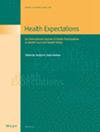An Interactive Vision-Based 3D Augmented Reality System for In-Home Physical Rehabilitation: A Qualitative Inquiry to Inform System Development
Abstract
Background
Postoperative physical rehabilitation is crucial after total joint replacement (TJR). However, completing the recommended levels of postoperative physical exercise is challenging for many older adults with TJR. Lack of adequate postoperative physical exercise has negative consequences on rehabilitation outcomes. Innovative rehabilitation tools for postoperative physical exercises are needed to ensure successful rehabilitation outcomes among older adults with TJR.
Objective
The aim of this study is to explore key knowledge users' perspectives about how to design an interactive vision-based three-dimensional augmented reality system (3D ARS) to support in-home postoperative physical rehabilitation for older adults with TJR.
Methods
We conducted a qualitative descriptive study involving 11 semi-structured interviews and six focus groups with 42 older adults with TJR and four unrelated family caregivers. Data were analysed using thematic analysis.
Results
Participant insights were grouped into two main themes: (1) dreaming up possibilities and (2) being pragmatic. The first theme captured participants' reflections on the potential utility of a 3D ARS for postoperative physical rehabilitation and features that could be embedded in the 3D ARS to support successful postoperative physical rehabilitation. The second theme captured participants' reflections on practical issues and considerations that could impact access and usage of the 3D ARS.
Conclusion
These findings provide researchers, rehabilitation providers and system developers with the foundations for designing, implementing and evaluating innovative augmented reality tools that support effective in-home physical rehabilitation among older adults with TJR.
Patient or Public Contribution
Research users (i.e., individuals and organisations invested in and using the research findings) were actively engaged throughout this work. Specifically, a meeting was held between the research team and representatives of an Expert by Experience team (individuals with lived experience), which was established to support the National Research Council's (organisation) Aging in Place programme. During this meeting, the idea to develop and evaluate an ARS for postoperative physical rehabilitation of older adults with TJR was supported. Research users had the opportunity to review the current study protocol and provide feedback on the study design, offering direction to maximize the relevance and usefulness of our findings to the National Research Council Canada's Aging in Place programme. Research users contributed to participant recruitment efforts and the development of the interview guide. Two Experts by Experience also agreed to be on the Advisory Panel for this multi-phased study, supporting active engagement and centring the voice of research users in knowledge creation and implementation. These experts reviewed a brief report of the current study findings, and continue to guide how the study findings are used to inform the next phase of this multi-phased research.

 求助内容:
求助内容: 应助结果提醒方式:
应助结果提醒方式:


